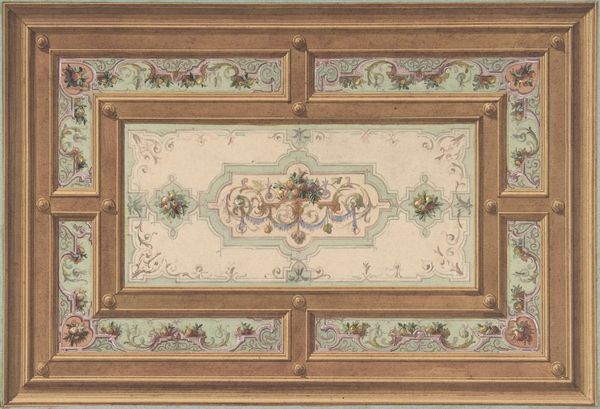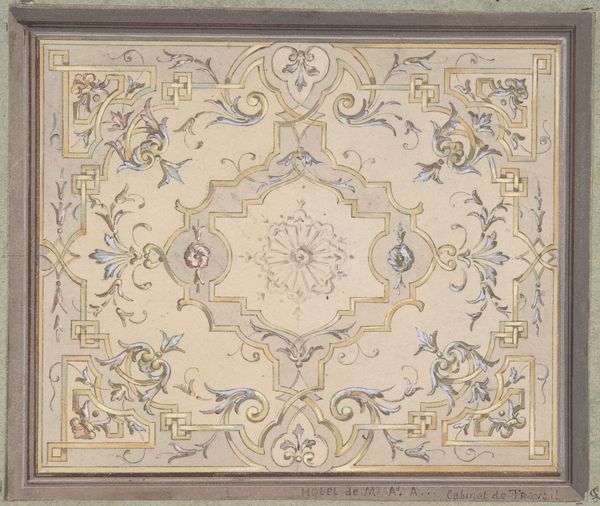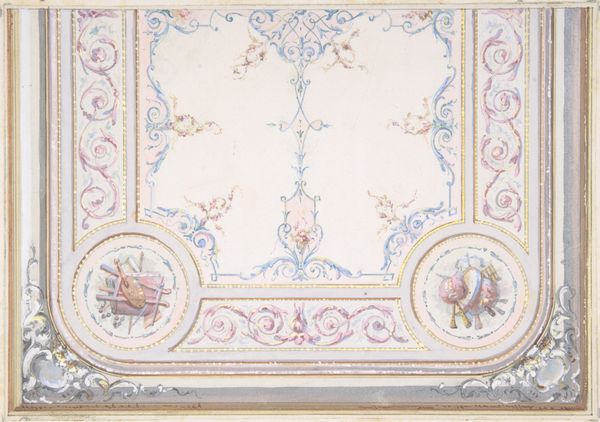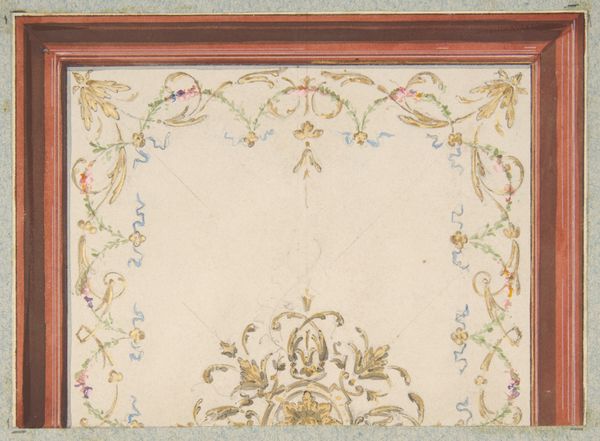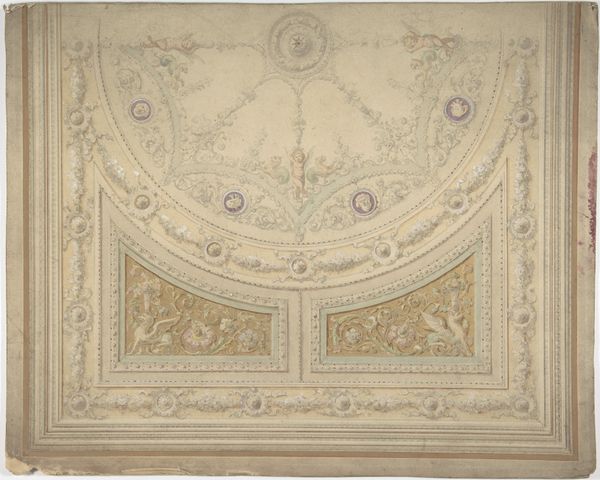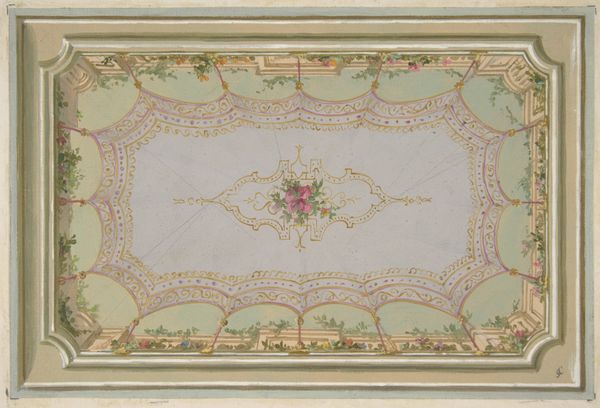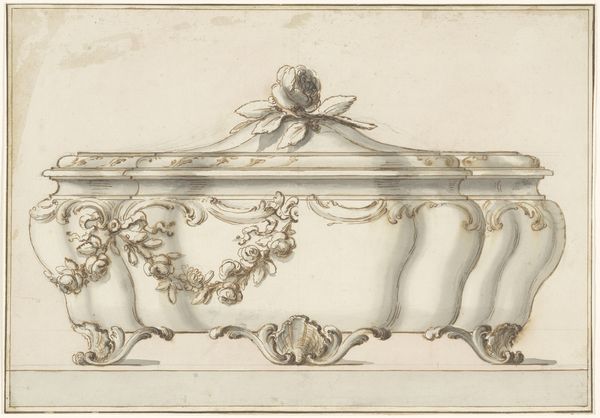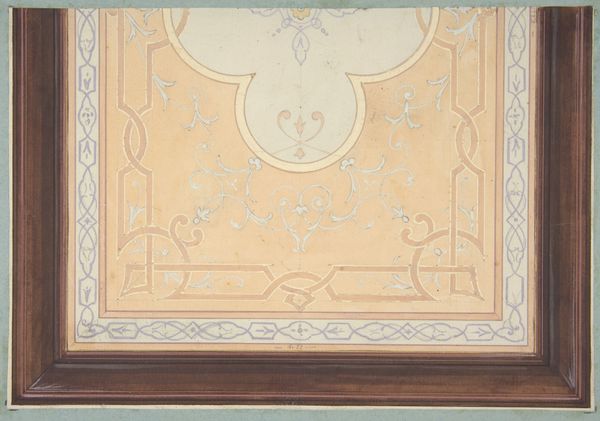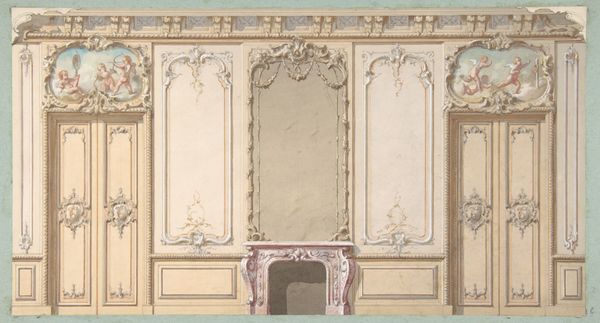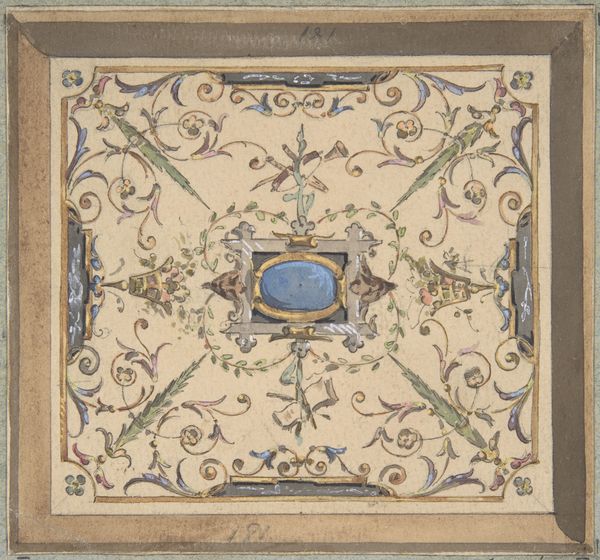
drawing, mixed-media, collage, tempera, print, paper, fresco, watercolor
#
drawing
#
mixed-media
#
collage
#
water colours
#
tempera
#
neoclassicism
# print
#
landscape
#
paper
#
fresco
#
traditional architecture
#
watercolor
#
decorative-art
Dimensions: 5 7/8 x 11 1/4 in. (14.9 x 28.6 cm)
Copyright: Public Domain
Editor: We're looking at "Design for Cove Section," an exquisite mixed-media drawing and collage, probably created between 1850 and 1900. It’s currently held at the Metropolitan Museum of Art. The colors are quite muted, almost faded. It looks like a carefully considered exercise in symmetry. How do you interpret this work? Curator: Observe the meticulous detail and the bilateral symmetry. The dominant formal element is line; it defines every contour and articulation. The palette, restrained and harmonious, subordinates itself to the draughtsmanship. It suggests a neoclassical decorative scheme, wouldn't you agree? Editor: It definitely screams neoclassicism! What about the sort of flat perspective? It reminds me of stage design or something similar, as if the primary purpose is the overall decorative effect. Curator: Precisely. The flattening contributes to its function as a design. It isn't attempting illusionistic depth, rather, it seeks to present a clear, legible pattern. Notice how the framing moldings emphasize the two-dimensionality. Editor: And the garlands of flowers provide a softness against all the rigid lines. Is that typical of neoclassical design? Curator: Indeed. Consider them as softening agents. Formally, they provide visual counterpoint and a moment of organic freedom, preventing the composition from becoming too severe. The balance exemplifies the sophistication of the era's decorative aesthetic. Editor: So, looking at the drawing from this perspective helps me see it less as a historical relic, and more as a carefully constructed interplay of line, form, and texture. Curator: Precisely. Formal analysis enables us to understand the designer’s intent, which, in this case, seems to be the pure pleasure of balanced and refined arrangement.
Comments
No comments
Be the first to comment and join the conversation on the ultimate creative platform.

